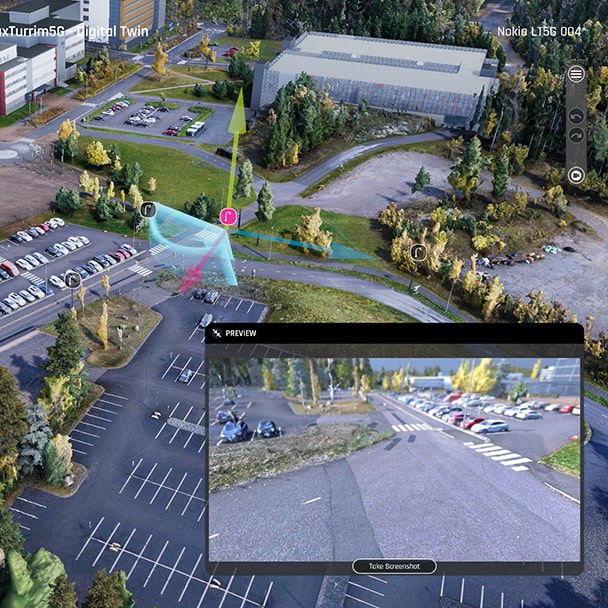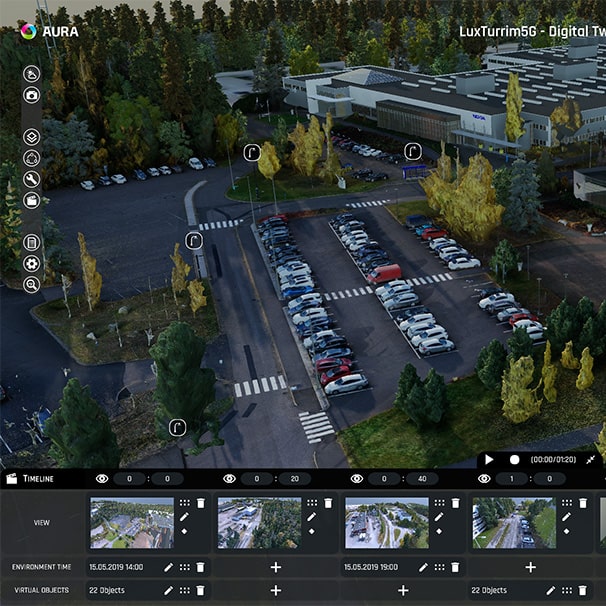
The Nokia Espoo Campus is one of Europe’s most advanced testbeds for smart city innovation. As part of the LuxTurrim5G program, it brings together 5G networks, IoT sensors, mobility services, and next-gen urban infrastructure. To manage this complexity, the consortium required a Digital Twin capable of integrating diverse datasets and supporting high-precision 5G planning at millimeter-wave frequencies.
Designing and optimizing FR2/mmWave 5G networks in a real urban environment introduces extreme spatial complexity. Signal quality is affected by buildings, terrain, vegetation, weather, and even passing vehicles. You can read about those challenges in this article.
The consortium needed a scalable, accurate Digital Twin to simulate a number of planning scenarios, integrate IoT devices, and support the development of new Smart City and mobility services — all without relying on costly on-site experiments.

Together with Sitowise, we developed a high-resolution Digital Twin of the Nokia Campus, combining 3D geometry, BIM and IoT data, smart poles and autonomous vehicles into an interactive environment.
Key capabilities include:
The system provides a unified environment for engineers, planners, and researchers to analyze, validate, and optimize Smart City concepts with high accuracy. You can see it in action beow:

The Digital Twin became the analytical backbone of the LuxTurrim5G program. It enabled:
Today, the solution demonstrates how combining Digital Twin, 5G, IoT, and advanced simulation accelerates Smart City development and provides a scalable foundation for next-generation urban innovation.
// See more projects in category
© 2022 Blare Technologies. All rights reserved. Privacy Policy